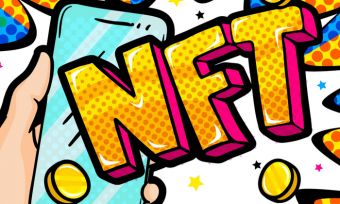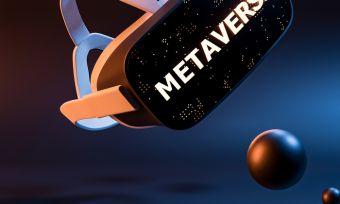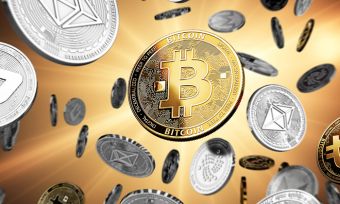It’s crazy to think that just 15 years ago Bitcoin didn’t exist. And even just 10 years ago, it may have existed, but few knew about it. Now, thousands of cryptocurrencies are being traded every day, and not a day goes by when Bitcoin and its successors don’t dominate the headlines. Whether it’s astronomical crashes or surges, government bans and proposed regulations, or eye-watering figures being thrown about for digital art or even digital land.
Because if sky-high house prices weren’t bad enough, now you can get locked out of the digital housing market too!
Bitcoin was the first true cryptocurrency and became the building block for what has grown into a multi-billion dollar industry. And before you wrap your head around the cryptosphere and all it has to offer, you need to know the basics. And the basics go back to where it all began, with Bitcoin.
So what is Bitcoin? Canstar guides you through everything to know.
What is Bitcoin?
In simple terms, Bitcoin is a decentralised digital currency. A digital dollar to store, send or spend as you would the NZ dollar. The main difference is there is no physical version of it and no centralised authority in charge of it.
Ultimately, each Bitcoin, or part of a Bitcoin, is just a digital code. If you hold the key to that code, you own that Bitcoin. If you trade or spend your Bitcoin, that keycode will pass to somebody else, just like traditional currency. This process is monitored by a public network, as opposed to a traditional centralised third party, like a bank.
However, to fully understand what Bitcoin is, you need to understand our current financial system, and the reason Bitcoin was created.
The background of Bitcoin
Bitcoin was designed to solve what its anonymous founder(s) Satoshi Nakamoto saw as the biggest problem with fiat currency: that a central authority, such as the government or central bank, controls and regulates it. That gives them an enormous amount of power and creates a relationship based on trust, not transparency.
This can lead to several issues:
- Fiat currency is not limited, and these central authorities can control the supply of money, impacting inflation or deflation and the value of your assets
- Any transferring or moving of money has to be done by the central authority, giving them the power to deny transactions, charge fees, freeze your accounts, or even make transactional errors
- Security of your assets is put in the hands of the central authority
- They control all the information in a centralised ledger. Without access to it, we have to trust that the information is correct. If they say an account has x amount of dollars, for example, we have to believe that information is correct
In the wake of the global financial crisis, Satoshi created Bitcoin, aiming to do away with the need for a central authority. It would operate as a digital currency that is decentralised and as Satoshi put it “trustless”. This is because everything is open for the public to see, and review. There is no need to simply trust a central authority is operating correctly or with honest intentions, as transparency is used instead.
How does Bitcoin work?
The best way to understand Bitcoin is to understand how it works. The process of sending and receiving Bitcoin highlights how Bitcoin follows this open and decentralised system.
The transfer
When I transfer Bitcoin to a friend, it isn’t an instantaneous process. First, my request is sent out to computers all over the world. These are called nodes, and technically, anyone can be one. the nodes can all see the same request. For example, I want to send my friend 10 bitcoin. Though, in reality, this request is actually encrypted. But let’s keep it simple.
The nodes first check their record of the blockchain to ensure the request is legitimate. The blockchain is a public ledger, as opposed to the private one your bank has. It holds all the information about all the Bitcoin transfers ever made, and every node has an identical copy of it. By looking back over the blockchain, the nodes can double-check if I own the Bitcoin I want to send.
If I do have the Bitcoin needed to complete the transaction, my request will be validated. And because thousands of nodes all across the world are all checking, my request will be checked and validated by this network. Not just a single person or authority. Hence, it is decentralised. An open network of multiple people, all checking an open ledger, to confirm the transaction is valid.
At this stage, my request has been validated by the network. But it still is unconfirmed. Once validated by the nodes it is sent on to the Mempool. The Bitcoin equivalent of the waiting room. This is where the miners come in.
Adding it to the blockchain
Miners collect these validated (but still pending) transactions, and put them into a block. This is like the filing cabinet that will hold a record of all the transactions made at a particular time. To add the block to the blockchain (the long list of filing cabinets stuffed full of transactions), miners must compete to solve complex cryptographic puzzles. Whoever solves it first, gets to add their block. Once added, this new and updated version of the blockchain is then broadcast back to the network of nodes who will confirm it all looks good and correct. If so, they will now use this updated ledger when checking incoming requests.
If my request was included in the block, the deal is now done. The unalterable blockchain now says that at this time I sent my friend 10 Bitcoin. And that can never change.
Because the entire process is handled by a public network on a public ledger, there is no one central authority overseeing it. Even the miner who facilitates the transaction (and becomes the temporary banker) more or less changes every time. This is due to the fact that solving the new cryptographic puzzle first, twice in a row, is statistically very unlikely.
As a result, you have (in theory) a decentralised system that removes the central authority. Minimising the opportunity for corruption, control, or even just a banking error.
How does this compare to a bank transfer?
On the other end, you have the centralised version we know today.
A bank transfer is entirely handled by your bank, using their own private ledger as a record. This ledger will check you have the money required to make the transfer, and that the recipient has the ability to receive it. If everything is deemed okay, the bank will be the one to take the funds from your account and move it to the recipients’.
Because one central authority is in charge, and because the ledger is private, the process relies on trust. Any information surrounding the transfer (or the status of my accounts at all) is relayed to me by the bank. I don’t have access to check the information myself.
Furthermore, the bank only provides me with information on my own accounts. Every other account holder’s information is private. With Bitcoin, not only is the ledger containing your transaction history public, but the information of every Bitcoin account in existence.
Where to buy Crypto in NZ
The display order does not reflect any ranking or rating by Canstar. The table does not include all providers in the market.
| Provider | Fiat Currencies | Bitcoin | Other Currencies | Est. |
| Easy Crypto | NZD, AUD | Yes | 100+ | 2018 |
| Independent Reserve | NZD, AUD, USA | Yes | 24 | 2013 |
| Kiwi Coin | NZD | Yes | No | 2014 |
| Swyftx | NZD, AUD | Yes | 228 | 2017 |
This information is not an endorsement by Canstar of cryptocurrency or any specific provider. Canstar is providing factual information supplied by providers. Cryptocurrencies are speculative, complex and involve significant risks. Canstar is not providing a recommendation for your individual circumstances or in relation to any particular product or provider.
Why do people become a node or miner?
For Bitcoin to operate, nodes and miners are an essential part of the process. If they didn’t exist, transactions would be left pending for eternity, no transfers would be made, and the blockchain would never be updated. Not to mention new Bitcoin would never get mined into existence (we’ll get to this below). Furthermore, if the network was operated by only a few individuals, this would concentrate power and control in the hands of just a few people, once again centralising the process.
So for Bitcoin to operate as intended, there needs to be a significant network of people maintaining it.
Why operate a node?
While being a node sounds difficult, in reality, nodes are not individuals sitting at their computers reading over logs of requests all day. Computers can do all this themselves; they simply need someone to turn on the power and boot up the software. So operating a node actually isn’t very costly, intensive, or difficult. And, people don’t need too much incentive to do it.
But, there does need to be some incentive.
Essentially, if you’ve poured a lot of money into buying Bitcoin, you want the network to survive and succeed. And because nodes are essential to Bitcoin’s survival, if you have a stake in the network, it’s in your own best interests to operate as a node and help maintain it.
This more or less provides the necessary incentive, and thousands of people across the world operate nodes on a volunteer basis. Not out of the goodness of their hearts, but to help keep their own investments safe.
Why mine Bitcoin?
Mining is a different story. It’s a hugely intensive process, one that requires significant investment and power.
The cryptographic puzzle needed to win the right to make the next block is complex and would take a regular old computer years to solve. It’s also designed in a way that means the more people who start mining, the harder the puzzle gets. Because of this, people have needed to design increasingly powerful computers to solve the harder puzzles. In turn, the more powerful machines burn through a heap more energy. It’s an expensive process that can no longer be performed on a significant scale by anyone with a computer hooked up in their home.
Today, Bitcoin miners are actually huge corporate-like entities that run networks of supercomputers designed for the sole purpose of mining Bitcoin. Why? Because the reward for doing all the hard work of maintaining the ledger is Bitcoin.
Currently, miners who successfully validate a block earn 6.25 Bitcoin. Or, at the time of writing, US$240,000. That’s a lot of money. And last year, when Bitcoin was at its peak, that same 6.25 Bitcoin was worth close to US$400,000.
Do all Cryptocurrencies work in the same way as Bitcoin?
This particular method is called Proof of Work. and not all cryptocurrencies use this exact consensus protocol. Some cryptocurrencies choose a different form of consensus, such as Proof of Stake, to make their ledgers work.
Furthermore, certain cryptocurrencies have evolved beyond simply a form of digital currency, and incorporate new uses and purposes. While Bitcoin is more or less trading digital gold, other forms of cryptocurrency are being used to play games, sell digital art or land, securely store money, or even offer decentralised financial services.
Many people also believe that cryptocurrency will come to be much more involved with our real-world transactions.
→Related article: The 10 Cryptocurrencies to Consider other than Bitcoin
The reality of Bitcoin
Bitcoin set out to be a decentralised currency, and while it may be that one day, currently, it isn’t really the case. The price is hugely volatile, and it is yet to be mass adopted as a form of payment. As a result, it’s used more as a speculative investment than a means of payment.
For example, the first-ever Bitcoin transaction was way back in 2009, when someone paid 10,000 BTC for two pizzas. In today’s market, that’s about US$380 million for a few slices of pepperoni.
And its value remains unpredictable, often jumping or falling in value by tens of thousands of dollars in a matter of days. In the past few months alone, Bitcoin has been valued at both US$67,000 and US$35,000. And everywhere in-between!
In that same time, the value of the USD has risen and fallen by a matter of cents.
This volatility makes Bitcoin owners reluctant to spend it, and merchants reluctant to accept it. As you never quite know the value of the coin being traded. And with talk of looming regulations and bans on one side, and eccentric billionaires endorsing Bitcoin on the other side (plus a fragile political and financial landscape to boot), you can expect the volatility to stick around for a while yet.
And even once/if the market matures and becomes more widely accepted, there’s no guarantee that Bitcoin will be around for it. It may be the coin that started it all, but that doesn’t necessarily mean it will be the one to last. We may very well see a new coin take market dominance in its place.
The reality is, no one really knows what the future holds.
Learn more about cryptocurrency
Where to buy Crypto in NZ
The display order does not reflect any ranking or rating by Canstar. The table does not include all providers in the market.
| Provider | Fiat Currencies | Bitcoin | Other Currencies | Est. |
| Easy Crypto | NZD, AUD | Yes | 100+ | 2018 |
| Independent Reserve | NZD, AUD, USA | Yes | 24 | 2013 |
| Kiwi Coin | NZD | Yes | No | 2014 |
| Swyftx | NZD, AUD | Yes | 228 | 2017 |
This information is not an endorsement by Canstar of cryptocurrency or any specific provider. Canstar is providing factual information supplied by providers. Cryptocurrencies are speculative, complex and involve significant risks. Canstar is not providing a recommendation for your individual circumstances or in relation to any particular product or provider.

About the reviewer of this page
This report was reviewed by Canstar Content Producer, Andrew Broadley. Andrew is an experienced writer with a wide range of industry experience. Starting out, he cut his teeth working as a writer for print and online magazines, and he has worked in both journalism and editorial roles. His content has covered lifestyle and culture, marketing and, more recently, finance for Canstar.
Enjoy reading this article?
You can like us on Facebook and get social, or sign up to receive more news like this straight to your inbox.
By subscribing you agree to the Canstar Privacy Policy




Share this article